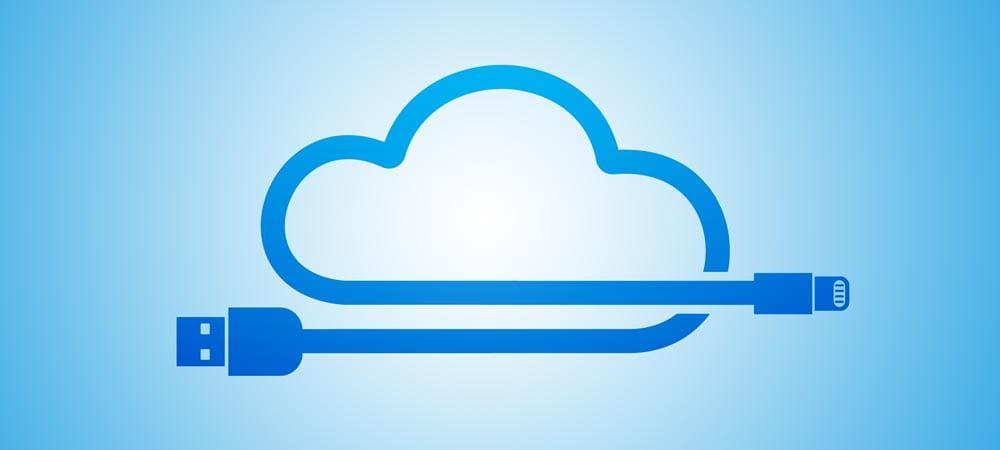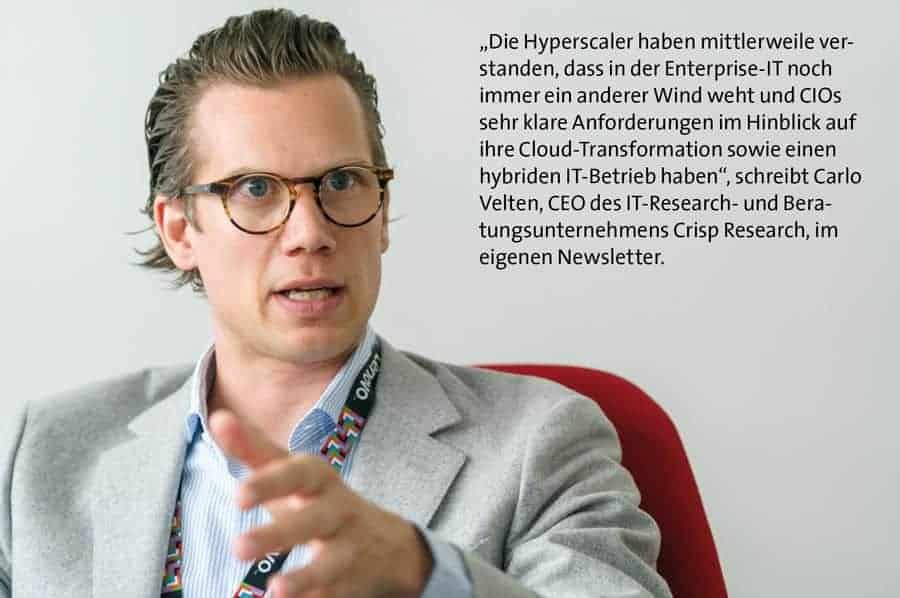Hybrid Cloud & Data Fabric


However, this requires a consortium to be able to cover all aspects conscientiously. The hybrid cloud community met in Amsterdam at the beginning of May this year to discuss current cloud and data trends.

The hybrid cloud is the best place to store enterprise data. NetApp has worked with Microsoft, Suse, and Cisco to create an architecture that is flexible, open, transparent, and secure for the existing SAP customer.
Customizing is carried out in each case with NetApp partners All4-One Group, LNW-Soft, and Accenture. In Amsterdam in May of this year, this holistic architecture concept and implementation know-how was presented publicly to the SAP community for the first time.
"More and more companies are introducing new, data-driven business models in which data plays a central role as a strategic resource. Accordingly, the requirements for data availability are also increasing."
says Eric Burgener, research vice president, Infrastructure Systems, Platforms and Technologies Group at IDC.
"Together with a data fabric strategy, NetApp's cloud-connected flash solutions provide users with the ease of use, availability, agility, and performance that enterprises need during their digital transformation. New, innovative business models can then emerge or evolve from the hybrid cloud infrastructure."
Corporate data exists in different formats and classifications. In a hybrid cloud architecture, this texture of data must be supported by an organizational model so that the data can not only be stored transparently and securely, but also processed according to a process logic.
A few years ago, NetApp coined the term "Data Fabric" for this, which this year was elevated to the technology trend for 2019 by the market researchers at Gartner. Data Fabric enables the communication of data in a heterogeneous IT architecture without media discontinuity. This not only ensures secure data management, but also makes the maximum benefit from the data available to every user.
According to analyst Gartner, the global market for cloud services will grow by 17.5 percent this year to a total of USD 214.3 billion. Last year, the figure was 182.4 billion US dollars.
The fastest growing market segment will be cloud system infrastructure services - or Infrastructure as a Service (IaaS). It is expected to grow 27.5 percent in 2019 to $38.9 billion.
"Cloud services are shaking up the industry".
says Sid Nag, research vice president at Gartner.
"At our company, we only know of vendors or service providers whose business models and revenue growth are impacted by the increasing adoption of cloud-first strategies in enterprises.
But what we are seeing now is just the beginning. Gartner projects that the market size and growth of the cloud services industry will be nearly three times that of all IT services by 2022."
The concept of "Data Fabric" naturally goes far beyond a simple product offering. NetApp has understood this comprehensive and holistic requirement and has initiated a partner landscape especially for the SAP community, where all functions and knowledge for customizing Data Fabric based on a hybrid cloud exist.
The NetApp portfolio offers all important tools for a heterogeneous IT landscape. This means that existing SAP customers always get the performance they need without having to change their own hardware or software platforms. With NetApp's intuitive solutions, users can quickly turn all the key levers to achieve cloud success faster.
The data center is often still the heart of an IT infrastructure. But only modern hybrid IT enables companies to provide their departments with the necessary resources and business platforms in a flexible, agile and scalable manner.
The efficiency of private, hybrid and multi-clouds depends on implementing technical innovations such as virtualization solutions, software-defined infrastructures, orchestration solutions, and converged or hyper-converged systems.
Innovations in the data center sector are fast-moving. Therefore, organizations need to regularly evaluate the maturity of their data center in order to adapt their strategy and keep up with the demands of the market.
A study commissioned by Virtustream was conducted by Forrester Consulting and is based on a global survey of more than 700 cloud technology decision makers at organizations with more than 500 employees.
In doing so, the study analyzes the current state of organizations' IT strategies in the case of cloud-based workloads and provides information on the growing interest of IT decision-makers in multi-use cloud architectures and their associated needs. The IT executives surveyed cited a variety of use cases for their hybrid cloud strategies.
At the same time, they trust that such an approach will deliver significant benefits to their business - from increased performance and agility to improved efficiency and lower costs.
Above all, performance and cost savings are among the most important success factors that companies use to evaluate their strategies. According to the study participants, the ability to react quickly and efficiently to changes and challenges within the company is the third most important advantage of the cloud.
Hybrid Cloud Roadmap
Hybrid cloud deployments are highly complex. Almost all companies surveyed experienced difficulties in deploying and using different cloud environments. Although 61 percent of respondents believe their cloud strategy is well aligned with their business goals, security and management challenges are still the biggest sticking point in usage, migration and deployment.
In response, many companies are looking to partner with cloud providers that have deep expertise in this area as well as managed service offerings.
The SAP community is on its way to a hybrid cloud architecture. The goal is clearly ahead of SAP's existing customers, and the roadmap still needs to be discussed with all stakeholders.
"Even though Crisp Research estimates the global cloud infrastructure and platform as a service market will be around $83 billion in 2019, this is not enough for the leading hyperscalers.
They have now understood that a different wind is still blowing in enterprise IT and that CIOs have very clear requirements with regard to their cloud transformation and hybrid IT operations. The world is not black or white after all".
writes Carlo Velten, CEO of IT research and consulting firm Crisp Research, in a recent blog post.
The basic prerequisite for this development is the increased use of the hybrid cloud. It is already the standard for many companies and has thus dramatically changed the view of cloud usage itself: from a paradigm that the public cloud is the best place for everything to a strategy of placing applications where they actually fit best.
And those who have a choice due to a hybrid cloud can decide on a case-by-case basis. NetApp's FabricPool supports Microsoft Azure, Amazon Web Services, IBM Cloud Storage, Google Cloud Platform and Alibaba Cloud.
This reduces the cost of primary storage: data that is not or rarely used can be moved to any major public cloud or to a NetApp private cloud using automatic tiering.
Data management specialist NetApp plans to provide hybrid cloud data services based on its proven Ontap software in Microsoft Azure. For customers moving to Azure, this will provide data tracking, awareness, access, control, protection and security capabilities.
Many organizations are turning to hybrid cloud to benefit from greater flexibility while retaining the advantages of traditional on-prem methods in terms of data efficiency, protection and knowledge.
Microsoft & NetApp
"Enterprises need Microsoft's cloud developments and broad Azure services portfolio to remain competitive in times of digitalization"
said Alexander Wallner, NetApp managing director EMEA, at the event in Amsterdam.
"With this new stage of our strategic alliance, we are extending our data services to Azure. This is how we help customers modernize their business and pursue new growth opportunities."
Microsoft and NetApp share a deep understanding of the needs of global enterprises. Both offer a variety of solutions that enable customers to leverage data to gain a competitive advantage.
Their collaboration has helped protect and extend the availability of Microsoft application data assets. Together, they provide a flexible infrastructure that supports virtualization and hybrid cloud deployments.
Hybrid Cloud & FabricPool
The Microsoft and NetApp collaboration includes integration of NetApp's new FabricPool functionality, which reduces cold data costs. FabricPool can automatically move data from the data center to the cloud and leverage Azure Blob Storage. And Azure will be available as a back-up target for NetApp's cloud control SaaS offering in the future.
Scott Guthrie, executive vice president, Cloud and Enterprise Group at Microsoft, commented:
"NetApp is a strategic partner in hybrid cloud data services for Microsoft Azure. Business customers around the world use NetApp data solutions every day. Our collaboration will yield new services. Customers using NetApp and Azure will have even more freedom to develop and deploy applications the way they want."
"Today, data centers are facing major challenges in meeting the growing demands from specialist departments and at the same time being able to make new offers through innovative ways. For modern IT, it is now a matter of converting the added value that lies in the data into an economic advantage for the companies.
Technologies such as the cloud complement in-house data centers, serve as an extended workbench and lead to further 'make or buy' decisions in terms of the services offered."
said Roland Wartenberg, NetApp senior director, Global Strategic Alliances SAP, in Amsterdam.
Hybrid cloud gives the ability to place data and workloads where they fit best - even in your own data center. Challenges with current data center outages, high costs, latency issues, and questions about control, security, and compliance are leading to a new trend: moving workloads and data back from public clouds to private and hybrid clouds. A big driver is the problem of data gravity, which will prevent the transfer of large amounts of data in the future, due to the rising cost of network transfers.
Most importantly, companies are looking for flexibility in setting up solutions and services that are flexible enough to grow with their business. These companies will be reluctant to commit to either side.
As enterprises evaluate the best IT infrastructure for their workloads, hybrid IT, with a mix of public cloud, private cloud and on-premises solutions, is likely to become the norm.
As cloud-ready applications are distributed across hybrid cloud environments, IT teams will need to deploy technologies like a service mesh that connects applications to the services they need, wherever they are.
NetApp provides companies with all the components they need from a single source to build a customized data fabric architecture consisting of hybrid cloud and on-prem environments. With these data fabric and NetApp solutions, applications in the SAP environment are possible that address existing customers individually and provide the decisive analysis data.
"New technologies show that companies will soon be able to generate, capture and disseminate huge amounts of data. Those who are not equipped for this will quickly be overwhelmed."
said Joel Reich, executive vice president, Storage Systems and Software at NetApp.
"NetApp Ontap enables organizations to overcome the challenges that come with these data-intensive technology innovations. That's because it's a smart, powerful, and proven solution, designed to get the maximum value from their data."
From practice for practice
LNW-Soft's consulting approach focuses on orchestration from the very beginning: combining complementary infrastructure product features that are interesting when viewed singularly, but not very profitable. And this with the focus on achieving an optimum in data center operation with the existing infrastructure products/solutions.
Specific recommendations for the combination and integration of existing or required infrastructure elements result in a concrete overall infrastructure solution. Based on these overall solutions, the LNW software solution PMS orchestrates the end-to-end data center operation by means of complex workflows. PMS is maintained and further developed on a long-term basis. Customers generally use PMS on a long-term basis, which results in deep customer relationships.
Software-defined approach
With version 15 of SLES for SAP, Suse supports deployments/transitions of business-critical workloads and applications both on-premises and off-premises to public cloud environments.
On top of that, it represents a so-called multimodal operating system platform in which traditional infrastructures, software-defined infrastructures (SDI) and application-oriented architectures can be operated or used in coexistence.
And it does so on a unified code base. Furthermore, SLES 15 for SAP Applications connects containerized and traditional development environments, including the combination of legacy applications and microservices.
In addition, the version offers improvements in the areas of: Minimization of downtimes, optimization of system performance and simplified deployment/management of SAP Hana systems.
Incidentally, SAP itself uses several Suse SDI solutions, for example, for the SAP Hana Enterprise Cloud (HEC), for SAP S/4 Hana on-premises or for the deployment of SAP S/4 Hana in the public cloud.







